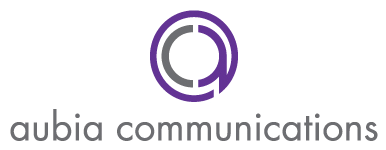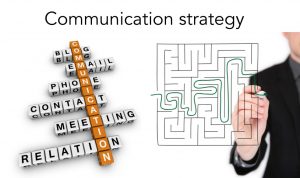 In 2008, I was actively using Facebook, letting MySpace die a slow death, thinking how completely useless my Twitter account was (got that one all wrong), and polishing my LinkedIn profile. I
In 2008, I was actively using Facebook, letting MySpace die a slow death, thinking how completely useless my Twitter account was (got that one all wrong), and polishing my LinkedIn profile. I was am a self-proclaimed social media junkie that was just beginning to hear about all the business accounts showing up on social media platforms. The concept was new, but I was excitedly putting together a proposal of why my office should be jumping on the bandwagon. After a well-fought campaign and many hours spent convincing old-school commanders, in 2009 Fort Eustis joined the ranks of national government entities, major corporations and non-profit organizations already on the likes of Facebook, Twitter and Flickr.
Like any new venture, it was a rocky start. I didn’t exactly think very strategically back then; like the Nike slogan, I was operating on a “just do it” mindset. A look-back at the sites and you can witness the sins of the early days of social media for business, especially the one-sided blasting of your audience without much interaction. To be upfront, it was bad. I learned, though, and, I worked out a social media strategy to develop the installation’s platforms into the source for current and accurate information.
Developing your social media strategy
Social media has come a long way from the days of awkward irrelevant updates about life’s mundane activities. Today, social media is used to break news, start revolutions, and launch entire campaigns. Though the platforms and concepts have greatly matured, there is still a learning curve for many.
How does a luxury hotel gain a 100 percent increase in sales from Facebook or a bicycle company increase annual sales by $500,000? They moved from disorganized social media actions to planned updating and interaction. How can you get there? After completing these initial steps, map out your strategy with these follow-ups:
1. Set your objectives
What is it you want to achieve from using social media platforms? Strengthen brand awareness? Connect with your tribe? Increase sales? Know what you are doing on social media, and develop SMART (specific, measurable, attainable, realistic and timely) objectives to work toward.
After Fort Eustis had been on Facebook for about a year-and-a-half and the fan base was consistently growing, the unthinkable happened. Due to Joint Basing with Langley Air Force Base in 2010, the Fort Eustis Facebook page had to be deleted and re-created to identify the new base, Joint Base Langley-Eustis (back then, Facebook wouldn’t allow the re-naming of a business page). At that time, I developed and obtained the goal that the new JBLE Facebook page would be the major source for information about the new installation, with an objective to re-gain the existing Fort Eustis Facebook page fan base along with an increase of 100 LAFB fans within the first month of the JBLE Facebook page going live.
2. Decide what you will post
It’s been a well-documented fact at this point that content is king. You need to decide how you will pay the proper homage to it. A mix of content can satisfy your most diverse audiences, but you must know what your particular audience responds to best and how to meet their needs.
In the JBLE Public Affairs Office, we had writers, photographers and videographers. We developed a mix of newspaper and website articles with photos, photo essays and videos along with breaking news and community updates to post to the social media platforms, covering an installation of more than 30,000 Air Force and Army personnel and family members.
3. Decide how you will post
Social media can be a time suck if you don’t have a scheduling plan in place, and knowing when and how you will interact saves valuable time in your already too-busy life. There are many marketing automation tools out there to help you schedule posts on various social media platforms, but just be sure to actively monitor these tools in times of tragedy and crisis.
Since becoming a freelancer, I have learned the value of an editorial calendar. I focus on a specific topic each month on the Aubia Communications Blog, and the calendar helps direct my social media postings for the month as well.
4. Post it
Once you have your plan in place, implement your strategy with well thought-out posts that support your campaign. Your tactics, be it a Twitter chat focused around a specific hashtag or Facebook contest encouraging fans to share their best photos of your product in action, should be in line with your objectives.
In the late summer of 2011 when Hurricane Irene struck the East Coast, the JBLE Facebook page became the No. 1 source of information for public information about the installation operations. Through a mix of posts of breaking news updates, Q&As and storm-related photos, the social media team was able to keep the JBLE community informed of base procedures throughout the storm.
5. Evaluate
As your social media strategy continues to support your business objectives, take the time to make sure you’re still on the right track. Are you meeting your objectives? What have you learned? Is your fan base actively engaging with you on your platforms? Are you providing value to your customers? There are many ways to evaluate your progress, from the amount of business inquiries coming through social media networks to sophisticated measurements from analysis platforms like Google Analytics.
During the public affairs office’s after action review for Hurricane Irene, we saw a significant jump in traffic and interaction with the installation’s Facebook page. We also gleaned lessons from fans’ questions and recommendations for the next emergency situation. The evaluation of the strategy was so insightful the office received accolades for it in a headquarters-level public affairs awards program.
6. Make adjustments and re-plan
As you conduct your evaluation, be on the look out for ways you can improve. Take note of lessons learned and suggestions provided by your fan base. Cut what isn’t working for you and increase what it is. Include these details in your next round of social media strategy for even more effective results.
After reviewing my social media posts to promote my blog, I learned that my fan base interacted more with posts that included personal teaser messages about that week’s topic. With that in mind, I’m now planning more teaser info and personal stories for future blog posts.
A social media strategy is vital to building successful relationships with your audience. Taking the time now to develop your strategy will save you time and resources in the future. How can you put a strategy to work for you?
photo credit: Rosaura Ochoa via photopin cc



